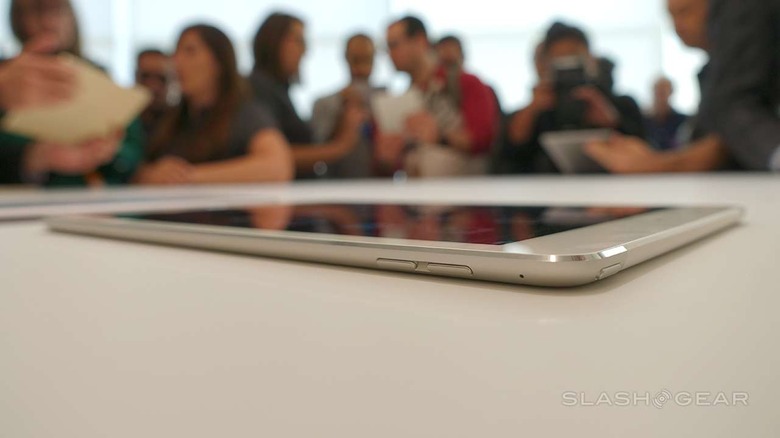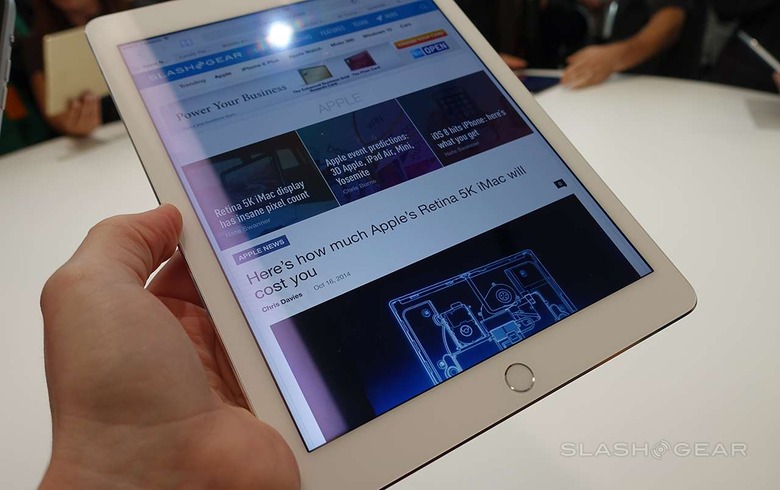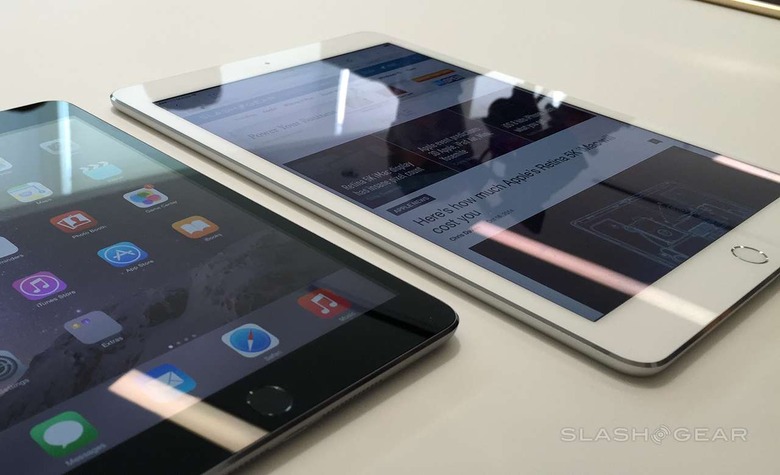iPad Air 2 hands-on: Witness the waif
Did the iPad Air need to be any slimmer? Apple certainly thinks so, and so the iPad Air 2 was born, just 6.1mm thick and now blessed with a Touch ID sensor that was previously limited to its iPhone cousins. At first glance it's hard to spot the difference, at least until you pick the Air 2 up, when its waifish build suddenly becomes more obvious.
6.1mm makes it the thinnest tablet on the market, and it feels almost like holding a small, stiff magazine. You could convince yourself that you're gripping nothing but a screen, in fact, and the Retina display panel looks great as usual.
Things move swiftly thanks to the new Apple A8X processor, and we were able to demo a number of apps that do real-time video processing and editing that demonstrate the 2.5x graphics improvement along with the new 8-megapixel iSight camera on the back of the tablet.

You do miss out one thing with the changes. The switch on the side, by the volume keys, has been dropped: that could be used for muting or screen-rotation lock, and we're sad to see it omitted, even if you can get to screen-lock through the Control Center swipe-up.

The interesting question is where this leaves the iPad mini, even in iPad mini 3 form. Part of the mini's appeal has always been its extra lightness and compactness over even the Air; that's been severely marginalized in this latest generation.

In fact, going from holding the iPad Air 2 to the iPad mini 3, and the thickness of the latter was very noticeable. It's still smaller face-on, but you can more easily hold the iPad Air 2 single-handed now, and that could give it an edge for readers or younger users.
With the extra performance of the A8X and the usefulness of Touch ID – even if you can't use it for in-store purchases – the iPad Air 3 truly represents a generational leap.
Apple is unlikely to break out individual sales figures, so we may never know, but there's no mistaking that the iPad Air 2 has reclaimed the top spot at the top of the iPad tree.














